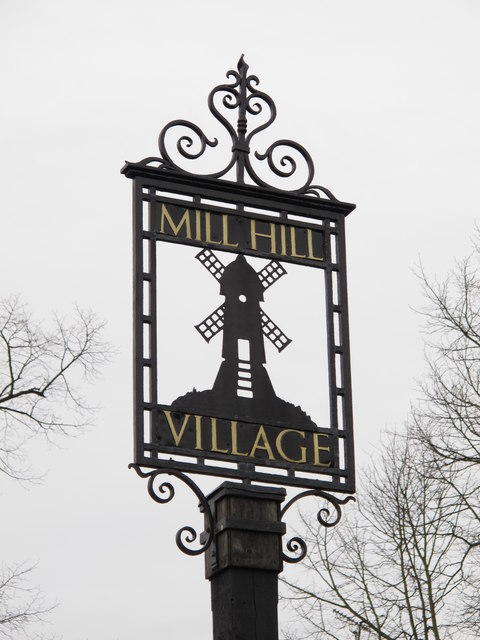Climbing is dangerous and you could injure yourself or someone else: do not attempt this cache unless you are competent to do so. Safety is YOUR responsibility. Respect the conditions and the environment.
Just because the cache is there doesn't mean you have to find it. There's always another day.

The signs can be made of different materials from fibreglass to wood, from forged steel to stone. They can depict anything from local industry to historical events. The tradition probably stated in Norfolk or Suffolk and has now spread across most of the country so we thought we would base a series on them. The series was started by our good friends Smokeypugs and has become far reaching in the UK from on in Scotland down to one in Devon and a fair few in between.
The area's name was first recorded as Myllehill in 1547 and appears to mean "hill with a windmill". However, the workings of the original Mill are in the building adjacent to The Mill Field. Mill Hill Village is the oldest known inhabited part of the district, a ribbon development along a medieval route called 'The Ridgeway'. It is thought that the name 'Mill Hill' may be derived from a mill on The Ridgeway, built on an area of open ground (now a park) known as The Mill Field. The village is bounded on the north and the south by Green Belt land, and its High Street, at 100 yards, is the shortest in London. The area's proximity to the city made it popular as a country retreat from the 17th century onwards, and large houses and quaint cottages survive. William Wilberforce (MP, and abolitionist of the slave trade) and Sir Stamford Raffles (founder of colonial Singapore) both briefly resided here, the former being the patron of Mill Hill’s first church, Saint Paul’s. As late as 1960 five shops existed in the Village but although the buildings survive, they have all since been converted into private houses, as the retail focus in the area shifted to Mill Hill Broadway.
If anybody would like to expand this series please do. I would just ask that you let Smokeypugs know first so they can keep track of the Village Sign numbers and names to avoid duplication.